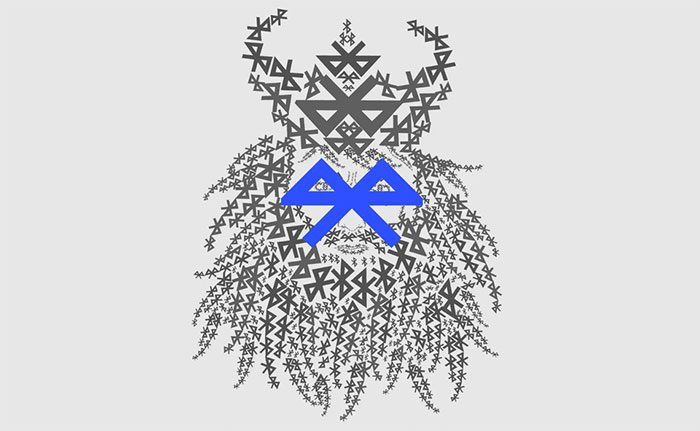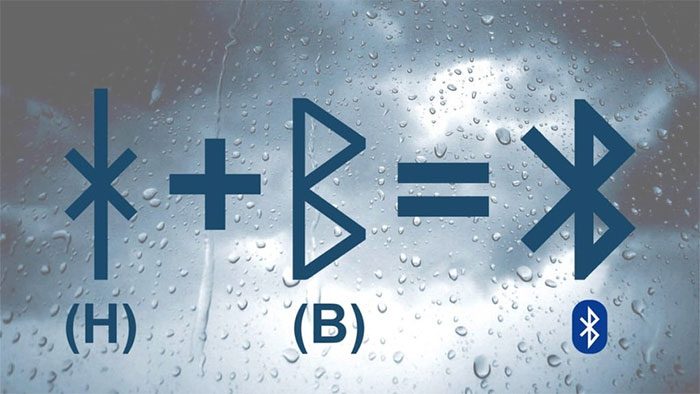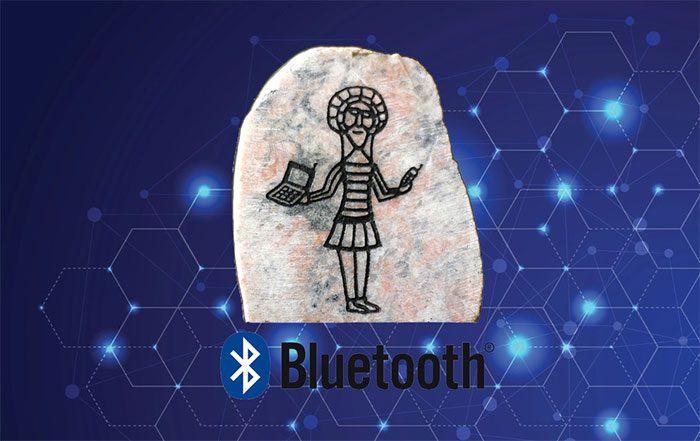This wireless connectivity technology is named after a Viking king.
Bluetooth wireless connectivity technology is now familiar to smartphone users, especially when using accessories such as headphones and microphones that connect wirelessly to computers and phones.
However, not all users are aware of the origins of the strange name “Bluetooth” (blue tooth). Few would guess that this connection standard is named after a 10th-century Scandinavian king.

Bluetooth was not the first name considered by companies for this connection standard. (Image: Grapheine).
The Origin of the Name Bluetooth
In 1997, major tech companies like IBM, Intel, Ericsson, Nokia, and Toshiba planned to develop a new technology for connecting devices. Among them, the Nordic companies Nokia and Ericsson led the project.
According to a story presented at a conference by Intel, Ericsson, and Nokia, two engineers, Jim Kardash (from Intel) and Sven Mattisson (from Ericsson), were drinking and discussing a good name for this new technology.
During their conversation, Kardash mentioned a book he had just read about Vikings, which featured a particularly notable king named Harald Bluetooth.

The Bluetooth logo is also derived from the initials of this king’s name. (Image: Nordic Culture).
The two engineers connected the idea of a king unifying regions with the connection between PCs and mobile devices over short distances.
“King Harald Bluetooth is known for uniting Scandinavia, just as we unite PCs and phones to create a short-range wireless connection,” Jim Kardash from Intel explained.
This story was shared at the meeting among Intel, Ericsson, and Nokia. The companies subsequently decided to standardize the short-range wireless connectivity technology and named it Bluetooth.
Bluetooth became the initial name of the project. A few months later, it was replaced by “RadioWire” or “PAN” (Personal Area Network).
“We held a meeting, solicited opinions, and voted on the official name, with PAN winning 4-1. At this point, everyone was using the name PAN, and we decided to agree on this name for the launch event,” Kardash revealed.
However, the communications team grasped the significance of the name “Bluetooth” and retained it as the official name for the technology.
“Yet Bluetooth was never even nominated,” he wrote in a personal blog.
Bluetooth was officially launched in 1998, and Ericsson created the first Bluetooth phone in 1999. This technology is still widely used today.
Additionally, the logo of this technology also pays homage to the Danish king. Specifically, the symbol in the logo combines the two letters H (for Harald – the king’s name) and B (for Blatand – blue tooth), both written in the ancient Nordic alphabet.
Who Was Harald Bluetooth?
Harald “Bluetooth” Gormsson (Danish: Harald Blåtand Gormsen) was the king of Denmark and Norway from 958 to 985, known for unifying these two nations.
Many historians have praised him as a great warrior. Thanks to Harald, conflicts between the three countries in the Scandinavian region, corresponding to modern-day Denmark, Norway, and Sweden, were resolved.
It is said that Harald had a “decayed” tooth, which appeared blue or black. This relates to his nickname Harald “Blatand” Gormsen, where “bla” means blue and “tand” means tooth.

Caricature of King Harald Bluetooth holding a phone and a laptop. (Image: Intel).
This detail was first mentioned in the “Chronicle of Rosskilde”, a 12th-century Latin book describing historical events in Denmark. The author used the term “Blatand” to describe King Harald.
William of Æbelholt, a French cleric who moved to Denmark, was the first to explain King Harald’s blue tooth. In the genealogy of Danish kings, written in the latter half of the 12th century, William described Harald’s tooth as dark blue, almost black.
Some people offer alternative explanations for Harald’s nickname. Scandinavians loved blueberries, a type of wild fruit commonly found in northern lands. Perhaps due to eating too many of these blue berries, his teeth turned this color.


















































